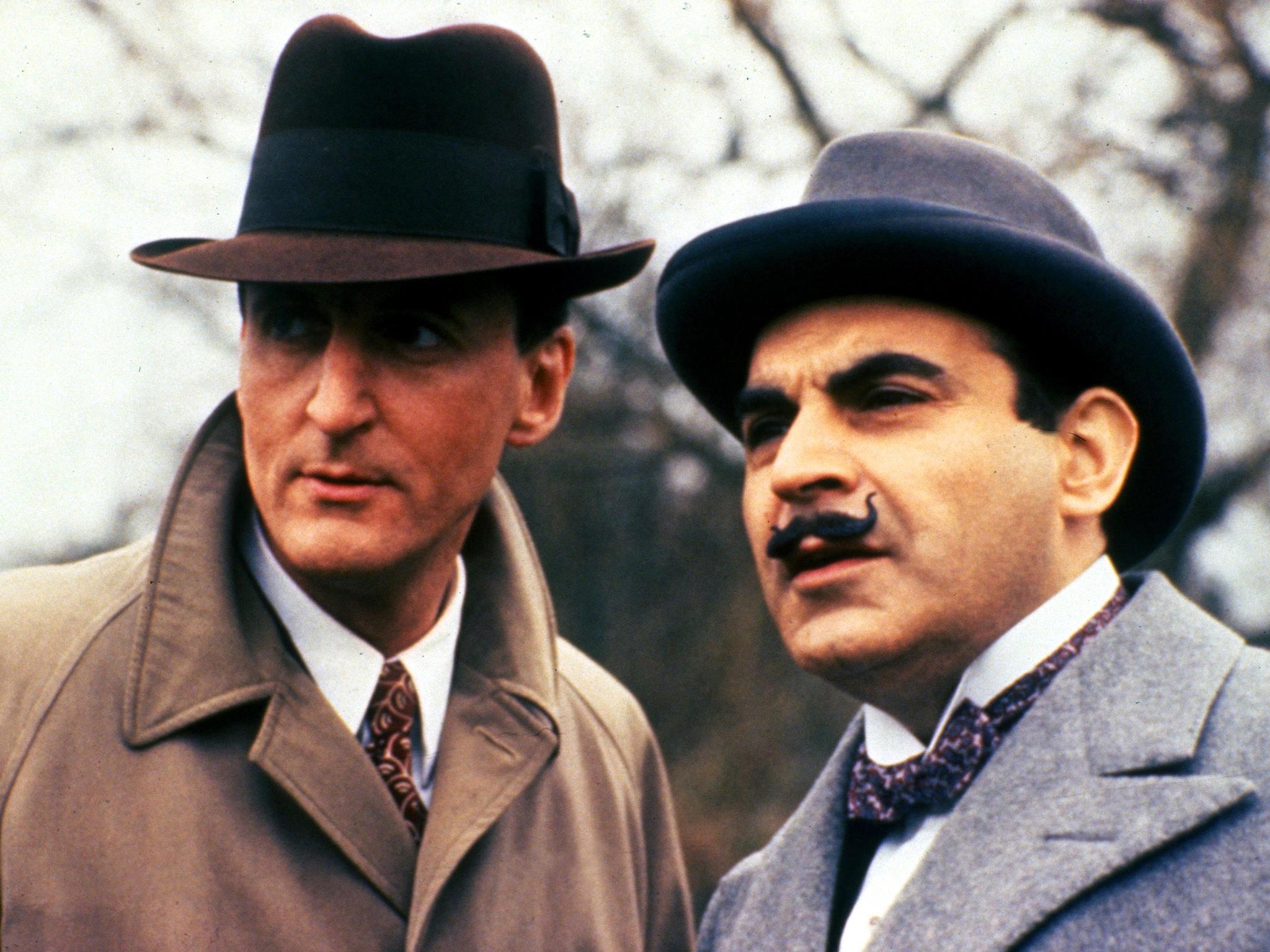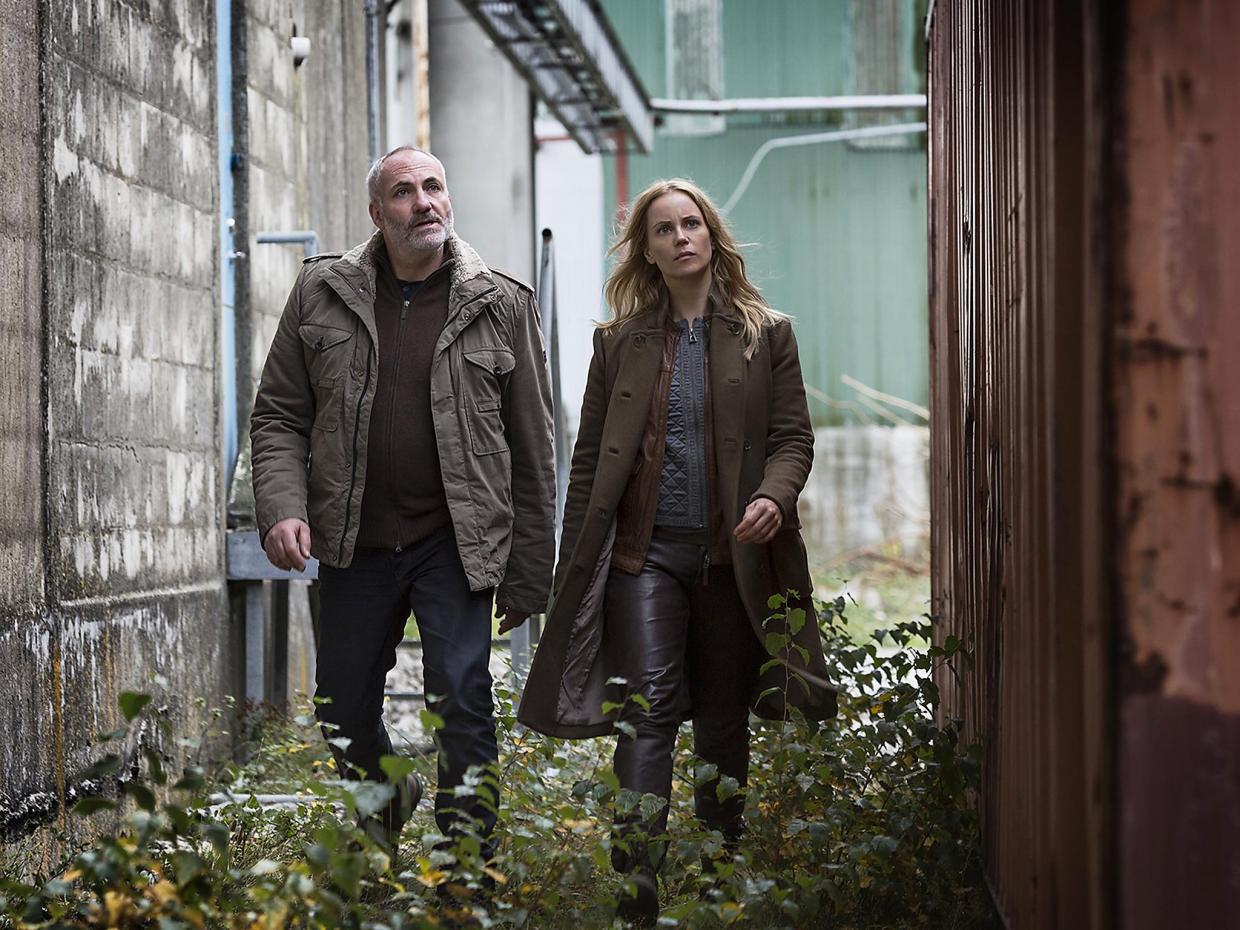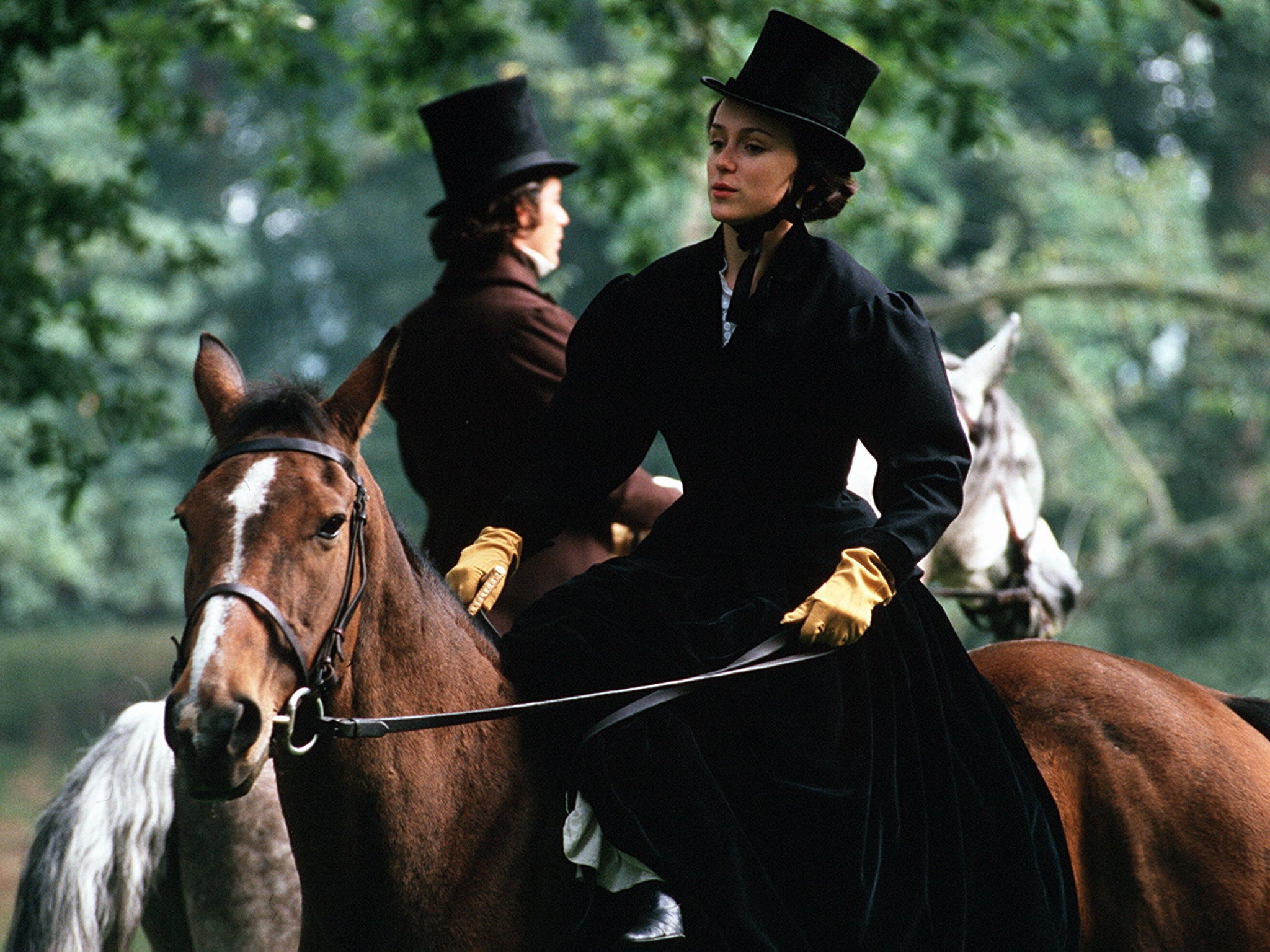Detective fiction: Why do we care whodunnit?
Crime fiction has been said to weave its mystery using a ‘sleight-of-hand trick’ – but, says Erica Wickerson, there are often much more complex techniques at play

From Sherlock Holmes to Hercule Poirot, Miss Marple to Columbo, Sarah Lund to Saga Noren, we have long been gripped by detective fiction. An opium addiction, elaborate moustaches, a knitting habit, a shabby overcoat, lovely Nordic jumpers, and a green Porsche: the only thing these idiosyncratic and frequently frustrating sleuths seem to have in common is their ability to solve crimes.
Critics have likened the detective story to “a sleight-of-hand trick, in which the magician diverts your attention from the awkward or irrelevant movements that conceal the manipulation of the cards” (Edmund Wilson, 1944), “as harmless a form of self-indulgence as completing a crossword puzzle” (Christopher Booker, 2004), and akin to a game of chess or draughts (Edgar Allen Poe, 1841).
So what is it that makes the whodunnit such compelling entertainment? A crime is committed, the detective arrives; we watch inthe suspense as he or she tries to piece together the clues to apprehend the baddie in time. It seems our fascination with murder mysteries cannot be satiated. There is undoubtedly an element of voyeurism and vicarious powerplay in our enjoyment of watching people being bumped off. But is it not the puzzle that really grips us? And if so, why?
In 1916, Agatha Christie wrote The Mysterious Affair at Styles. She bet her family and friends that she could write a mystery with all the clues presented to the reader, but that they would not be able to solve it. Only a moustachioed Belgian and his “little grey cells” could unveil the killer. So Hercule Poirot came into being.
In The Seven Basic Plots, Booker suggests that the whodunnit follows the “overcoming the monster” arc. A killer is on the loose, and they need to be caught. But this misses the complexity of detective fiction. The trick in fact lies in its manipulation of time.
Tzvetan Todorov, the Bulgarian-French critic, said that there were three types of narrative drive in crime fiction: the drive of the whodunnit, that of the thriller, and that of the suspense plot. The whodunnit effectively moves backwards to piece together past events (a la Poirot); the thriller moves forwards in step with the characters (a la James Bond); the suspense plot combines both (a la Hitchcock). The whodunnit poses the question: what happened? The thriller makes us ask: what will happen next? With the suspense plot we wonder: what has happened and what is about to happen?

This formula has had us riveted for at least 300 years. Crime writing was popular in the 18th century, with the added tension of the death penalty imposed even for minor misdemeanours. It was, however, only really in the 19th century that the idea of the whodunnit was born: its hero was a sleuth considering the clues to solve the mystery. ETA Hoffmann’s Mademoiselle de Scuderi (1819) and Edgar Allen Poe’s The Murders in the Rue Morgue (1841) are often credited with being the first examples of whodunnits.
TS Eliot, however, believed that Wilkie Collins’s The Moonstone invented the genre of detective fiction, and Dorothy L Sayers called it the finest example ever written. 2018 marks its 150th anniversary but its tale of theft, murder and intrigue continues to grip and haunt 21st century readers. This year has also seen the final season of the Nordic noir series The Bridge, garnering huge contemporary audiences at home and abroad. The Moonstone is set in an upper-class English country home in 1848. The Bridge takes place between Sweden and Denmark in 2018. The Moonstone follows the disappearance of a priceless diamond, originally the product of imperialistic plundering. The Bridge investigates the gruesome murder of a civil servant involved in rejecting claims for asylum by a gay refugee. At first glance, these two works seem totally different.
But in fact both The Moonstone and The Bridge play with time in a particular way that enhances the suspense already provided by the question: whodunnit? This contributes to the lasting appeal of The Moonstone and the current popularity of The Bridge.
Most classic detective stories start with a crime, and then pit PC Plod against the brilliant mind of the private detective or amateur sleuth. Typically, the whole story is told in retrospect, often by a loyal stooge. Dr Watson recounts the adventures of Sherlock Holmes, and Captain Hastings generally narrates the investigations of Hercule Poirot. Watson and Hastings are near at hand but lack the insight and ingenuity of Holmes and Poirot, only grasping what has happened by the time of the denouement. They effectively replicate the experience of us as readers, witnessing events and desperately trying to keep up.
The Moonstone and The Bridge subvert this retrospective model. They contain not one but two interwoven plots, one that moves backwards in time while the other moves forwards. They do not just model themselves on the “overcoming the monster” plot, as Booker suggests, but intertwine this with the “quest” mould too. The “quest” involves the detectives’ search for past clues to discover the criminal’s identity; the “overcoming the monster” arc entails the detectives’ attempts to apprehend the criminal in the present. This means that there is constant tension pulling us in one direction or another, backwards or forwards. When one drive decreases, the other increases.
Wilkie Collins moulds The Moonstone story in a highly innovative way. There are multiple narrators, moving upstairs and downstairs in turn. As the narrators change, so too do their modes of storytelling. Some recreate accounts specifically for the purpose of the investigation, while others offer diaries or letters written at the time. The temporal perspective therefore repeatedly changes, while the story oscillates between the drive backwards on the quest for knowledge, and the drive forwards as a kind of thriller.

Rachel Verinder, a young heiress, is bequeathed the priceless but cursed moonstone. On the night of her 18th birthday, however, with many guests staying and mysterious strangers lurking in the area, the jewel goes missing. The head servant, Gabriel Betteredge, “take[s] the pen in hand” and writes what he remembers of the period surrounding the theft, moving us backwards in time. The investigation into the crime dominates the first narrative. Then the investigation hits a dead end, and the hero, Franklin Blake, leaves England. For the second narrative, the irritatingly pious Miss Clack, a poor and envious relation, produces her diary, in which “everything was entered […] day by day as it happened”. Now time speeds up (even if this period is less gripping in terms of action) because Miss Clack has very little hindsight and cannot know what is to come. We become invested in relationships in the present, while the puzzle of the past lingers in the background. With Franklin Blake’s return a year later, as all hope for reconciliation with the object of his romantic interest, Rachel Verinder, seems lost, the forward momentum abates, and we go back to the past once again. The housemaid Rosanna Spearman’s letter is discovered, written a year earlier, taking us back to the tragic and mysterious events of that period. Then the enigmatic doctor’s assistant Ezra Jennings enters. As he attempts an experiment recreating the circumstances of the night of the theft, he writes in his diary every hour or two, speeding up time to its highest velocity yet. Will the experiment work? What will it uncover? Will the lovers rekindle their romance? And so the oscillation between moving back and moving forwards continues. Each time one drive slackens in tension, the other pulls us onwards.
The oscillation between past and future occurs with the changing narrators, but also on a smaller scale throughout. Betteredge’s retrospective narrative, for example, also jumps forwards, creating what the French narratologist Gerard Genette called a “prolepsis”, a subsequent moment told out of chronological order, more than just foreshadowing events to come. Betteredge instructs us: “Read on, good friend, as patiently as you can, and perhaps you will be as sorry for Rosanna Spearman as I was, when I found out the truth.” What will there be to pity in Rosanna? What is being concealed? Betteredge then laments, “If I could only have looked a little way into the future, I would have taken Rosanna Spearman out of the house, then and there, with my own hand.” Betteredge as narrator hints at knowledge that Betteredge as character at the time did not have. Our appetites are whetted and we want to catch up.
The Bridge plays with perspective and temporality in a similar way to The Moonstone, but transposed onto the medium of TV. Like most TV series without a frame narrative, The Bridge is mainly told as events unfold rather than after the fact. Season four inevitably differs from its predecessors because the audience already knows some of the characters’ histories. We have followed Saga Noren (Lanskrim Malmo – it’s hard to say her name without that appendage) throughout three previous investigations, complex relationship arcs, and scrapes with death. At the beginning of this series, we find her in prison, falsely convicted of murdering her mother. It is clear that Freud’s fascination with the links between detective fiction and psychoanalysis will be relevant: “In both”, Freud writes, “we are concerned with a secret, something hidden … In the case of the criminal it is a secret which he hides from you, but in the case of hysterics it is a secret hidden from himself.” The final season in particular continually looks back to the characters’ private pasts – a kind of psychological howdunnit of Saga’s idiosyncratic view of the world and an unofficial investigation into the historical disappearance of Henrik Sabroe’s children – alongside the forward-moving investigation into serial killings in the present. Saga’s counselling sessions going back to childhood and Henrik’s hallucinations of his daughters trapped in an ageless past effectively take us back to past times without moving from the present.

As with The Moonstone, the development of personal relationships and the investigation provide forward momentum in The Bridge, while we are intermittently dragged backwards to past events as well. The series starts with a gruesome murder and we are left wondering what happened? More bodies pile up and more questions are raised about the past. By the time Saga has discerned a pattern in method to the murders – “Stoning. Electrocution. Poison. All three are execution methods used to carry out death sentences” – the pace changes and suspense about the future rises. The police commissioner Lillian Larsen asks: “How many methods are there?” Saga’s reply foreshadows events to come – “Seven used in the world today. Those three, firing squad, hanging, gas chamber and decapitation.” But who will the victims be? And when? Each time there is a major breakthrough with the case, it increases the sense of threat about what will happen next.
This change of direction from whodunnit to thriller occurs exactly halfway through the series, in the last minute or so of episode four out of eight. The opposite rhythm is visible, for example, in Jed Mecurio’s Bodyguard: it starts as a thriller with us desperate to know what will happen next, and then exactly halfway through shifts to a whodunnit as we question what has happened and who is to blame. As the characters and the viewers (and we often have more knowledge than the hero again because of the multiplicity of perspectives) gain more clues, the drive shifts again to thriller.
Overlapping plots and multidirectional tension aren’t a given in detective fiction. And multiple narrators have a big impact on this. As Todorov observes, a key characteristic of the whodunnit is that the detective who solves the crime and the loyal friend who narrates the story are immune to injury and death. By necessity, they live to tell the tale. There are some notable exceptions to this model (and to mention them here would be a major spoiler in those cases). Poirot generally feels like a safe person to be around. For example, in Murder on the Orient Express, each chapter centres around the interrogation of one of the 12 suspects on the train carriage. A sidekick is present and Poirot never really seems to be in danger. His theatrical denouements in most novels are so public that it never feels particularly likely that the killer – once unveiled – will be able to do much (though the modern TV adaptations do enjoy adding an extra touch of melodrama at these moments). Steven Moffat’s and Mark Gatiss’s TV series Sherlock certainly ramps up the thriller drive as Benedict Cumberbatch’s Sherlock Holmes seems immune to fear when a puzzle is pressing, and Martin Freeman’s Dr Watson is occasionally shown updating his blog of their adventures after the fact, rather than acting as narrator throughout. The Moonstone and The Bridge sidestep the traditional sense of security by offering multiple points of view. This means that anything could happen to anyone.
If the point of view is altered, it transforms the mystery. For example, the Los Angeles detective series Columbo breaks the whodunnit mould entirely. Each episode begins with a murder, but – unusually – we, the viewers, witness the crime. We see who the killer is, we see their attempts to cover up, throw suspicion elsewhere, and to construct an alibi. We know whodunnit, how they dunnit, and why they dunnit. The suspense lies in how Columbo will discover the truth. It is a detective story but not really a whodunnit.
The puzzle of detective fiction is enthralling. The characters may know something that we desperately want to discover, or we may have witnessed something and worry that the detectives won’t catch up in time. This timing of knowledge is crucial to the creation of suspense. But the really thrilling stuff combines multiple plots and multiple temporal drives. In expert hands, the combination creates constant momentum. It isn’t simply the conjurer’s sleight-of-hand in concealing the significance of certain clues or emphasising red herrings, but a careful oscillation between piecing together past events and foreshadowing future ones. In the words of the faithful servant Betteredge, we are left burning “with detective fever”, but also on the edge of our seats about what could happen next.
Join our commenting forum
Join thought-provoking conversations, follow other Independent readers and see their replies
Comments
Bookmark popover
Removed from bookmarks